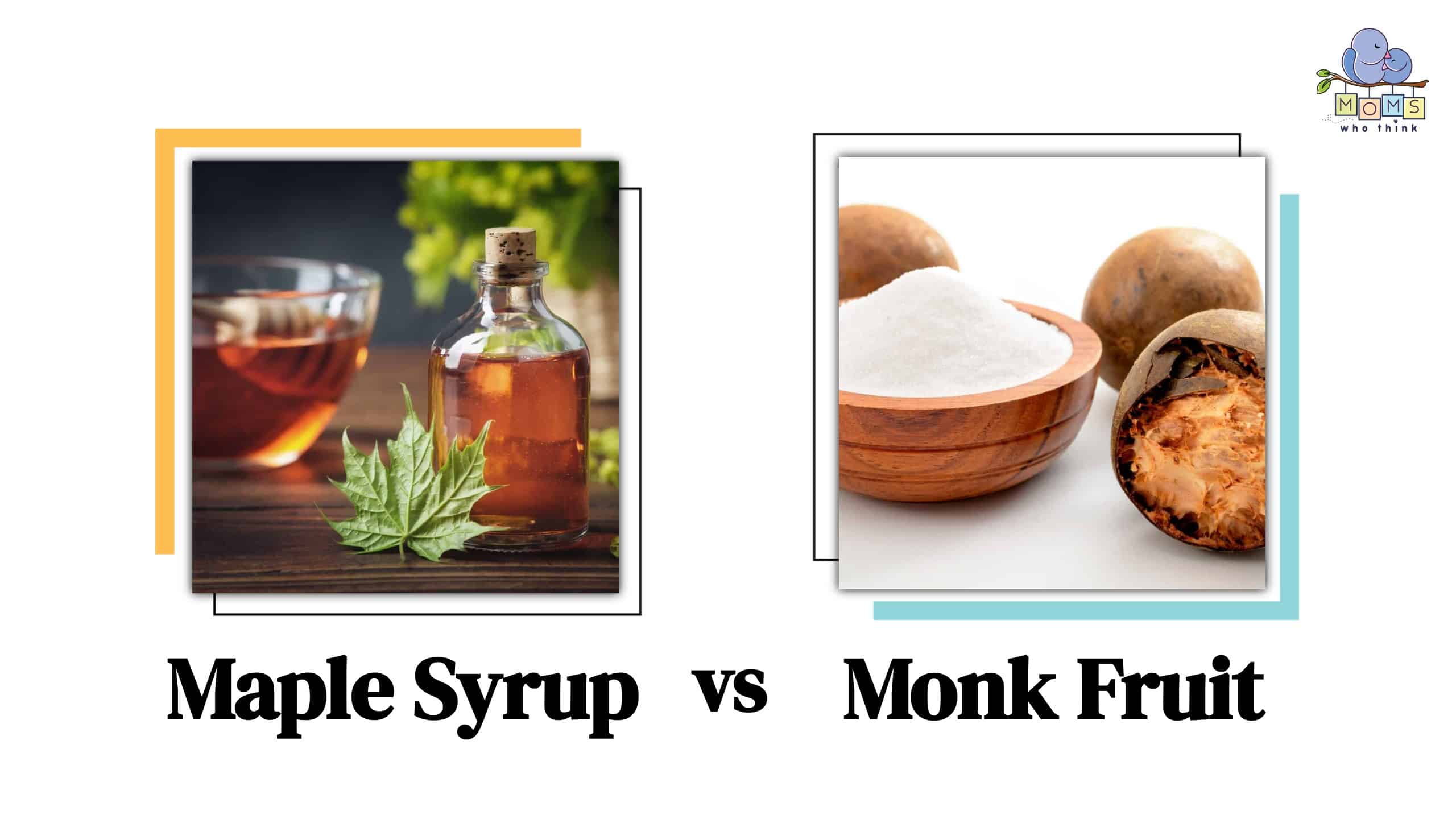The richness of maple syrup is unparalleled but when it comes to the better sugar substitute, does it beat monk fruit? Let’s explore six key differences between maple syrup vs. monk fruit, including their sugar content and where they land on the glycemic index. Plus, learn two new recipes that allow each sugar substitute option to shine!
Which Is the Better Sugar Substitute: Maple Syrup or Monk Fruit?
| Maple Syrup | Monk Fruit | |
|---|---|---|
| Source | Sugar maple trees | Monk fruit |
| Process | Boiling | Juice collection, drying, and isolating mogrosides |
| Sugar Content | Natural sources, primarily made of sucrose | Zero sugar |
| Flavor | Rich and complex with caramel undertones | Neutral and versatile |
| Nutritional Value | 52 calories per tablespoon | 0 calories |
| Glycemic Index | High glycemic index | Low glycemic index |
Maple Syrup vs. Monk Fruit: Source
Sugar maple trees naturally excrete sap that is a little bit sweet in its untouched form. However, to create pure maple syrup, the sap has to first be collected and boiled to create a concentrated sweetener. Monk fruit is a sweetener that comes from monk fruit, which is also known as swingle fruit. It comes from southeast Asia and has a notable sweetness to it. Inside monk fruit, there are mogrosides, which are the compounds that ultimately get extracted to create this unique sugar substitute.
Maple Syrup vs. Monk Fruit: Process
To create pure maple syrup, the process requires boiling the sap derived from sugar maple trees. With monk fruit, the process is a bit different. First, you have to remove the skin and the seeds of the fruit before crushing it. Then, you can filter out the sweet compounds that come through in its final form, be it a liquid or powder.
Maple Syrup vs. Monk Fruit: Sugar Content
One tablespoon of maple syrup contains 14 grams of sugar. This is a naturally sourced sweetener that’s primarily made up of sucrose. Monk fruit, on the other hand, has a zero-sugar content. This also means it doesn’t have any calories, which is helpful for certain diets.
Maple Syrup vs. Monk Fruit: Flavor
If you’re looking for a more robust and well-rounded flavor experience, maple syrup is the way to go. It offers undertones of caramel and a hint of vanilla, which makes it distinctive. Monk fruit has a much more neutral flavor profile and is quite versatile, which allows you to add it to nearly any dish or drink to sweeten it up!
Maple Syrup vs. Monk Fruit: Nutritional Value
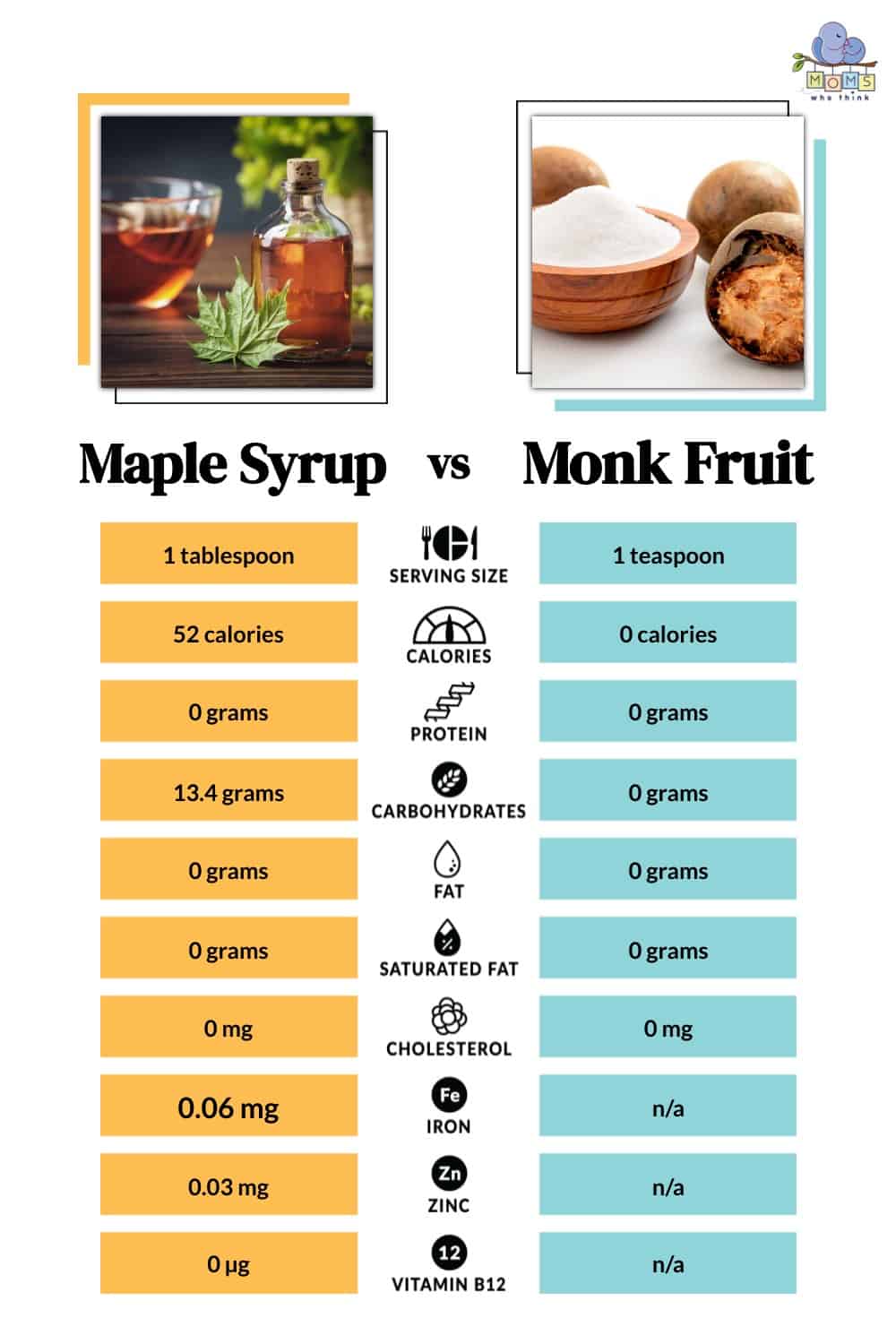
One tablespoon of maple syrup contains 52 calories, 13.4 grams of carbohydrates, .06 milligrams of iron, and 0.03 milligrams of zinc. A single teaspoon of monk fruit contains no calories or carbohydrates and does not contain any other nutrients.
Maple Syrup vs. Monk Fruit: Glycemic Index
The glycemic index of maple syrup is around 54, which is less than your typical table sugar but still higher in comparison to monk fruit. Monk fruit has a glycemic index of zero, which makes it ideal for those managing their blood sugar levels. However, it’s important to keep in mind that some monk fruit sweeteners may include additional ingredients that impact the glycemic index, and therefore how it affects blood sugar levels. Make sure that you are checking the ingredients list before purchasing a monk fruit sweetener if blood sugar management is your priority.
Maple Syrup vs. Monk Fruit: Can You Substitute One for the Other?
If you’re looking to sweeten a dish, you can certainly use either maple syrup or monk fruit. However, it’s important to keep in mind that they have different flavor profiles, and they affect the texture and consistency of whatever dish you’re preparing. This is especially true if you are planning on creating baked goods at home. Powdered monk fruit often bodes best unless you’re making a baked good that allows maple sugar to shine. Monk fruit is significantly sweeter than maple syrup, which means that you’re going to use less sweetener overall.
With maple syrup, you’re probably going to incorporate more to reach a level of sweetness you appreciate. Additionally, maple syrup is a thick liquid whereas monk fruit is typically a powder or a more concentrated liquid. Ultimately, maple syrup is not an all-purpose sweetener, which means it’s not going to work for some recipes. With monk fruit’s neutral and versatile flavor, you can use it more freely with various dishes without worrying about altering the flavor or taking away from the main ingredients.
When it comes to maple syrup vs. monk fruit, the best sugar substitute is the one that works best for your household. The richer flavor experience is maple syrup but it’s higher in calories and has a higher glycemic index. If you need a sweetener that you can use with just about anything, monk fruit is the more versatile option. Plus, it has a zero glycemic index and is a better choice for those managing their blood sugar levels.
Easy Recipe to Let Maple Syrup Shine
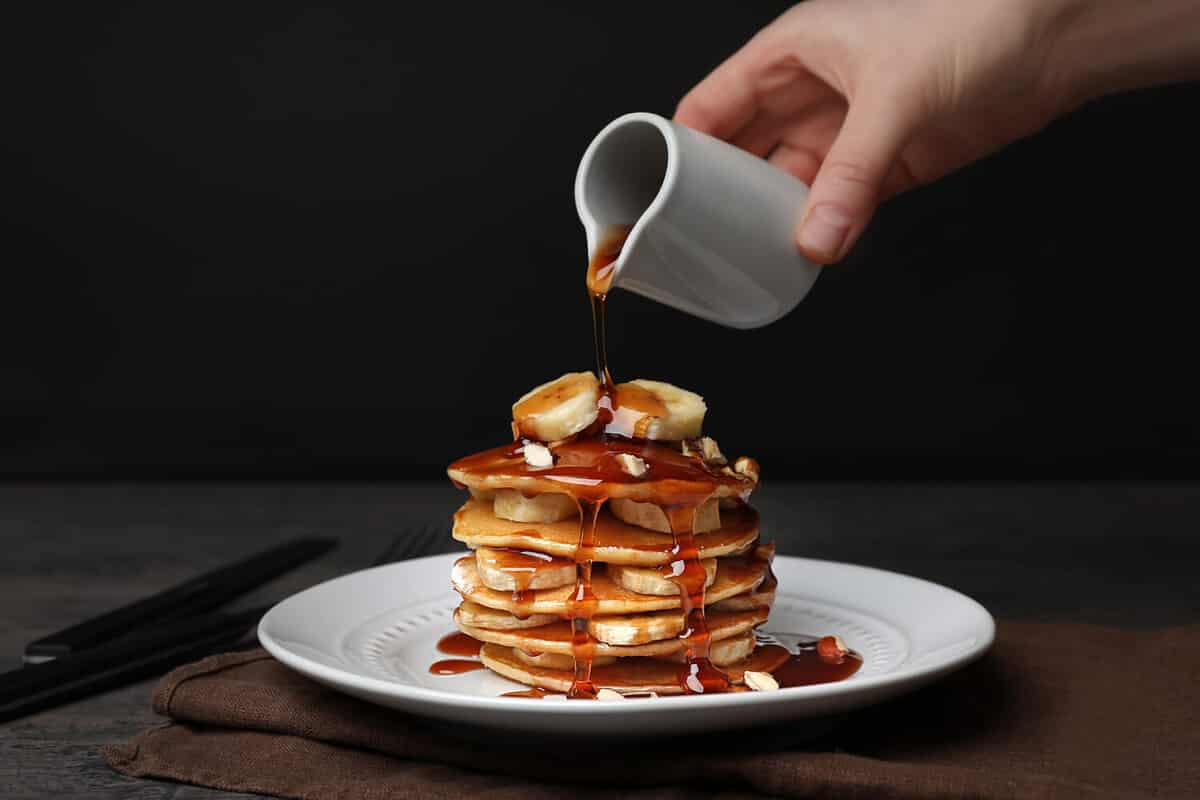
©New Africa/Shutterstock.com
When you think about maple syrup, you probably conjure up images of pancakes, like in the image above. These are some fan favorites! But there are also ultra-creative ways to let maple syrup shine. For example, a frozen maple mousse. Sounds good already, right? The best part? It’s ridiculously simple to make! Below are the only ingredients you need:
- Maple syrup, pure (3/4 cups)
- Heavy cream (1 cup)
- Egg white (1)
Start by freezing your mixing bowl. It may sound a little weird but stay with us. Just pop it into your freezer for 15 minutes! Take your pure maple syrup and heat it—stop just before it boils. Your stovetop may be a better choice for this so you can keep an eye on it. Make sure it stays warm as you move on to the next step.
Grab another mixing bowl and use an electric mixer until the egg white starts to get thick. Then, start slowly pouring in your warm maple syrup while you continue beating the mixture. Continue for a couple more minutes until the mixture thickens and develops a sheen.
You’ll need your electric mixer for this next step so wash the beaters before continuing. Take your chilled bowl out of the freezer and pour in the heavy cream. Beat it until the cream gets stiff (this should take about four minutes). Then, be gentle as you fold in your egg-white mixture.
Finally, pour your mousse into a container to pop back into your freezer. Let two hours pass before digging in!
Easy Recipe to Let Monk Fruit Shine
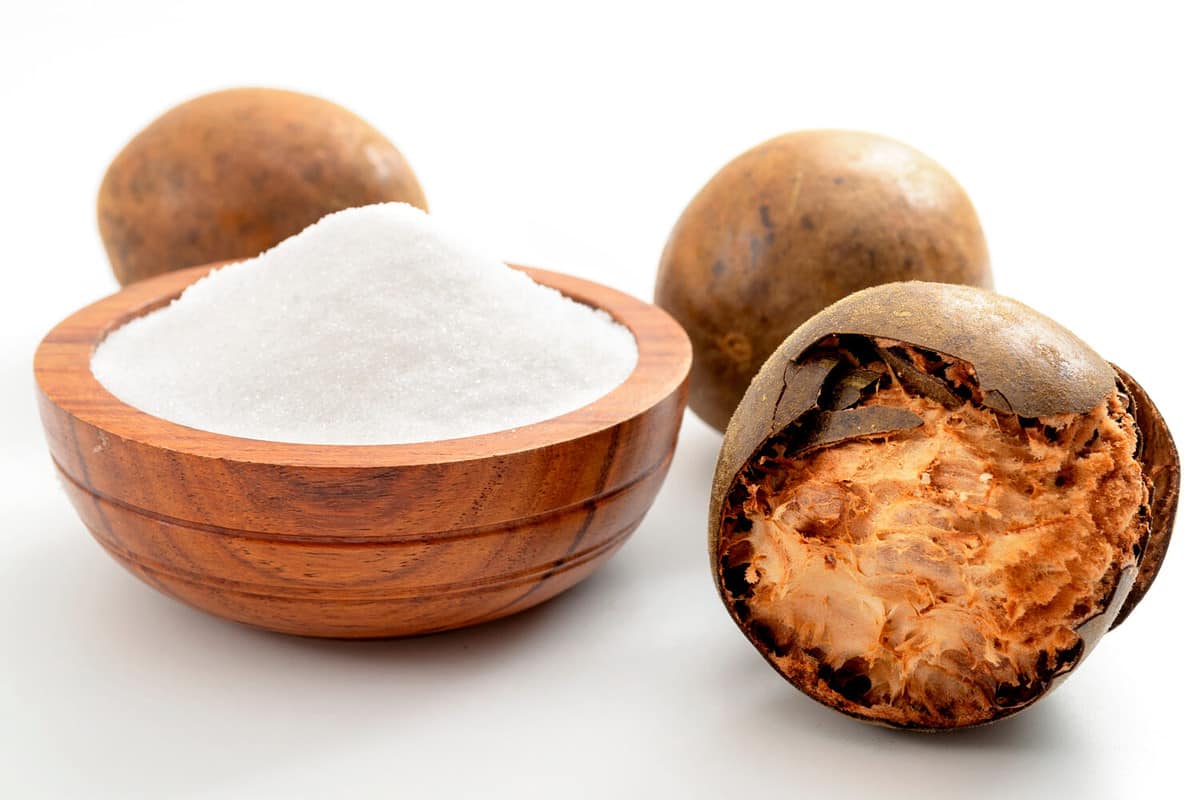
©Victor Moussa/Shutterstock.com
How can you let a zero-calorie, zero-sugar, and relatively mild-tasting sweetener shine? We’re glad you asked. It doesn’t take a whole production. You can enjoy a delectable raspberry jam topping with just a handful of ingredients — plus, it’s the kind you can add to your weekly menu because it’s not only delicious but packed with nutrients!
Print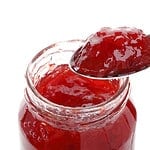
Raspberry Monk Fruit Jam
Ingredients
- Water (1/2 cup)
- Raspberries, frozen (4 cups)
- Monk fruit sweetener (1/3 cup)
- Chia seeds (3 tablespoons)
- Water (1/2 cup)
Instructions
- Start with a saucepan and add the raspberries, chia seeds, and water.
- Using medium-low heat, bring it to a low boil. Then, let it simmer for four minutes.
- When you remove the saucepan from the heat, add the chia seeds, carefully stirring them in. Let it sit for about 10 minutes, so the sauce thickens.
- Then, stir your jam once more and place it into a jar for use at your leisure!
